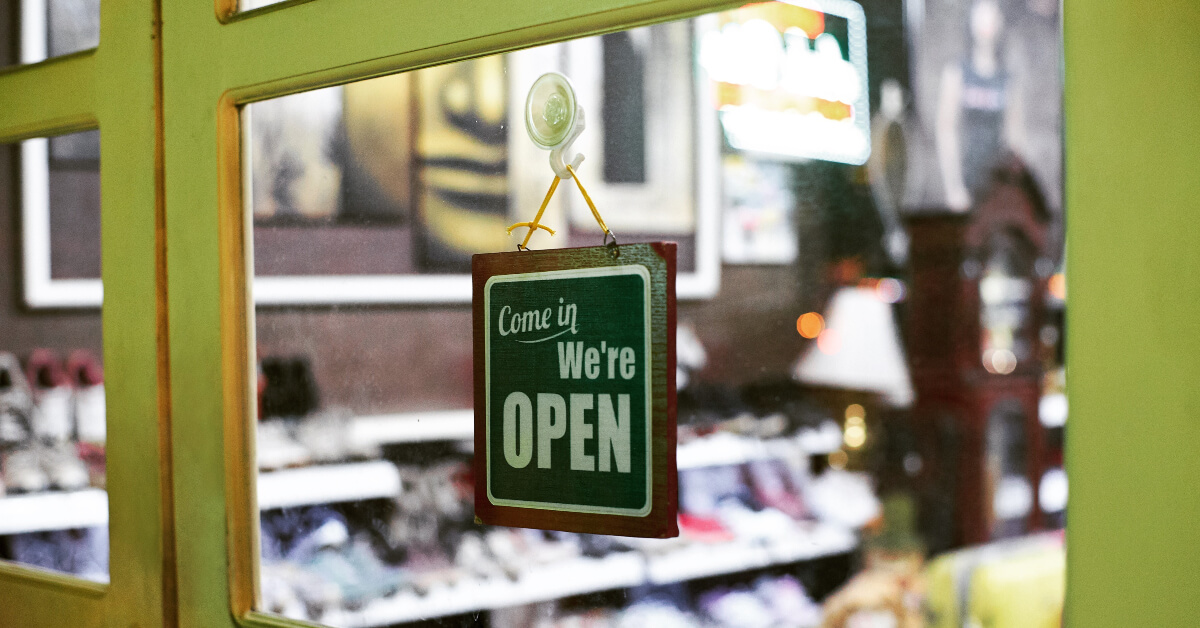Sign up for Funding Circle newsletter!
Get our latest news and information on business finance, management and growth.
Updated: March 27th, 2020

E-commerce has given shoppers many great things, including free delivery and the ability to shop 24 hours a day. But it’s presented a difficult challenge for independent retailers: how do you keep up with changing consumer preferences?
While consumers are increasingly turning to the internet for their purchases, your storefront can still survive — and thrive. All it takes is a little strategy. Here are seven ways you can stand out:
Big-box stores may be a convenient one-stop shop, but they can lack charm and personality. Use this to your advantage. Curate an experience that makes visiting your business more than a mindless shopping trip. Consider how you want customers to think and feel about their experience from the moment they step into your store. Everything from sounds to smells matter, so select each aspect with care. Even little things like offering free Wi-Fi or water can go a long way and motivate your customers to share their experiences with others.
Online retailers may offer dirt-cheap goods, but they can’t hold a candle to the sincere and personal customer service you can provide. Even the smallest personal touches make a customer’s experience memorable. Encourage your sales people to genuinely engage with customers about their interests and preferences, and consider offering perks like complimentary gift wrapping or concierge service.
Can’t price your goods and services as cheaply as your competitors? Set yourself apart in other ways, like advertising flexible payments. Whether you offer layaway or point of sale financing through companies like Affirm, which lets customers buy what they want today and pay over time, this can help attract a wider set of customers — namely those who might’ve not been able to do business with you otherwise.
These may sound dated, but loyalty and referral programs can bring a lot of value to your business. New tools like Thanx combine the components of both types of programs to help increase customer engagement and purchase frequency. Loyalty and referral programs also provide a wealth of information about your customers’ buying habits, preferences, and spend frequency – helping you make smarter marketing decisions.
If your product is seasonal (think ice cream, ugly Christmas sweaters, etc.), you may experience low points in your annual sales cycle. An in-store event during these periods can help offset the losses you might otherwise incur. Make it more appealing by bringing in light catering or offering special deals.
Other small businesses are likely in the same boat as you, so consider working out a deal to mutually place coupons or referral codes at each other’s stores or create a bundle deal for your customers. If you know of another retailer or small business just starting up, offer to lease some of your extra retail floorspace. This gives them exposure to your established customer base while you generate additional revenue to offset your property costs. Just be sure your offerings compliment each other.
Even though the internet’s impact on in-store sales has been significant, there are ways you can use it to your advantage. Make sure you have a complete profile on the sites customers would likely use to find you: Google My Business, Yelp, Facebook, and Yellow Pages (yeah, that Yellow Pages). According to Yelp, a stunning 85% of customers use the internet to find local businesses, so it’s important to make sure your presence is up to snuff.
While it may sound intimidating, search engine optimization (SEO) isn’t as hard as you’d think,and it’s an important aspect of making sure new customers can find you! To get started, read our handy guide on how to boost your internet presence.
As a small business, one of your greatest advantages over big companies is your ability to be nimble. When you hit roadblocks, pivot quickly and think creatively, and you should be able to easily ride out the storm.
Paige Smith is a content marketing writer who specializes in writing about the intersection of business, finance, and tech. Paige regularly writes for a number of B2B industry leaders, including fintech companies, small business lenders, and business credit resource sites.

